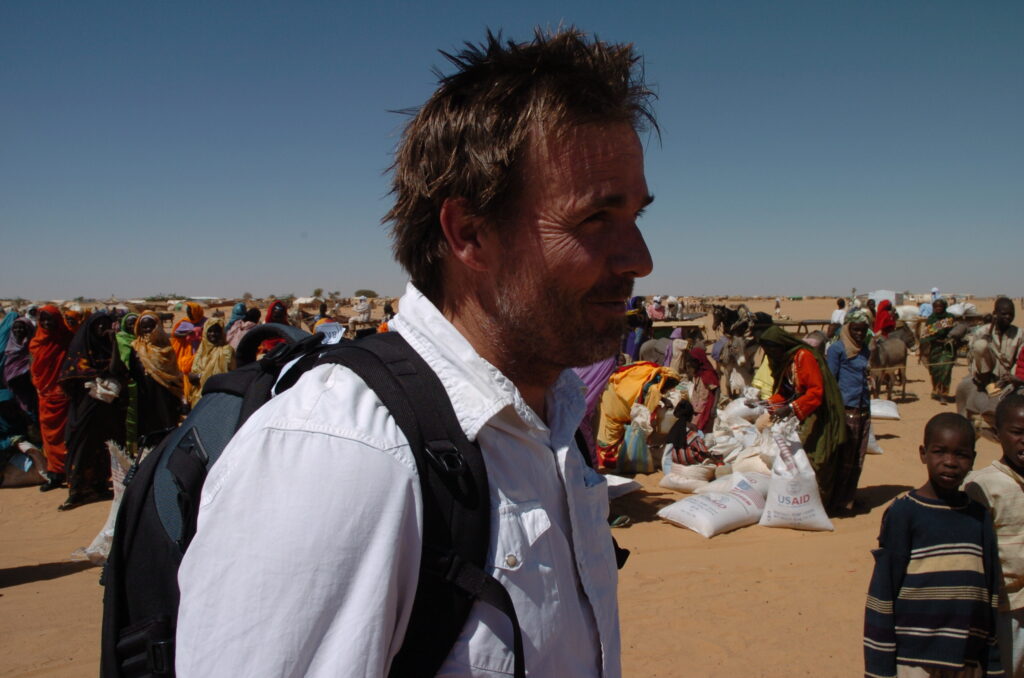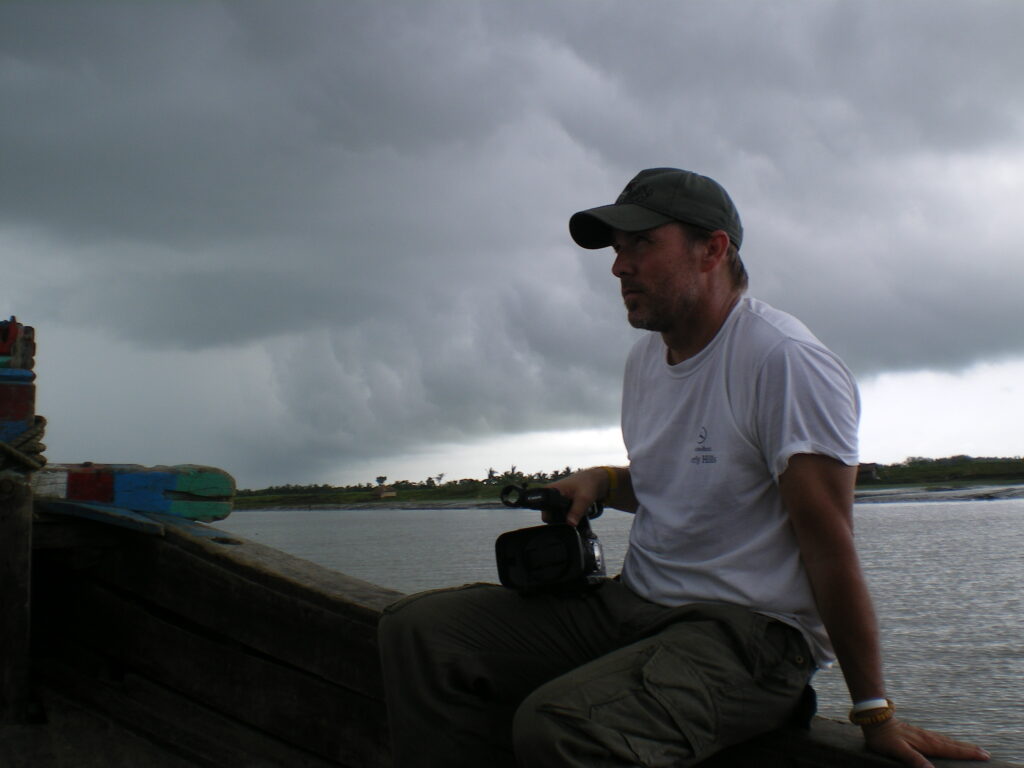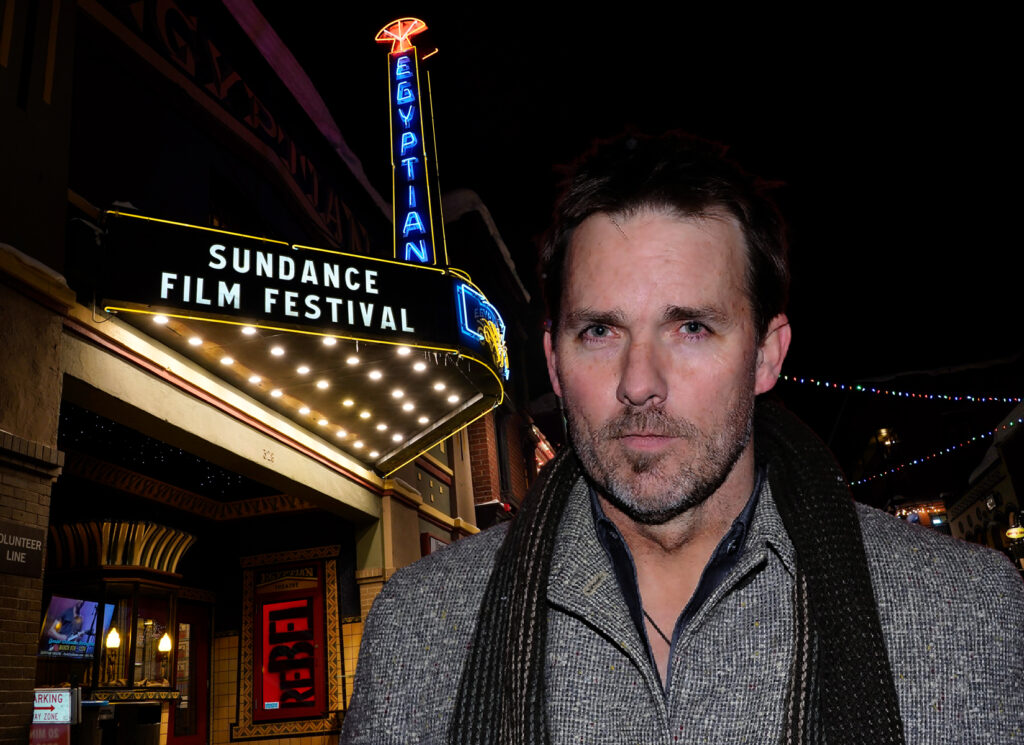Michael P. Nash is the film director, screenwriter, and producer behind the acclaimed documentary “Climate Refugees”, which explored the global impact of climate change by visiting 48 countries to meet face-to-face and listen to the people directly affected.
The movie premiered at the 2010 Sundance Film Festival, where it garnered critical acclaim. It was also featured at the L.A. Film Festival and was screened at the United Nations.
During Climate Week NYC of September 2023, The G Gallery in New York showcased artworks inspired by the documentary.
This film has shed light on a previously unknown group of displaced individuals and the factors driving their displacement. Michael’s efforts have sparked global discussions on the issue of climate refugees, as the UN has used this film multiple times around the world as an instrument for change to policymakers and heads of state.
Nash is currently working on creating a sequel titled “Chasing Truth”, with the support of executive producers like Leonardo DiCaprio and his father George; along with VoLo Foundation, represented by chief scientist, cofounder and trustee David S. Vogel, and cofounder and trustee Thais Lopez Vogel.
The movie, scheduled for release in 2025, aims to delve into the crucial intersection between overpopulation, climate change, and resource scarcity.
In this conversation, Michael shares with VoLo Foundation the genesis of his original idea, its global impact, his concerns about the topic, and offers insights into what can be expected from “Chasing Truth.”
Focusing on the Victims
– How did you conceive the idea for Climate Refugees?
– in 2007 climate change was about polar bears, Greenland, and that it was happening 50 to 100 years away. Then, I read something that had the two words, ‘environmental refugees’ together, and I was like, “What does that mean? What is an environmental refugee?” That was the beginning of this journey.
I had an investor who wanted to be involved in something that would change the world. We didn’t know what it was.
I presented him with a couple of ideas, a human face of climate change. And he goes, what do you mean? I said,” Well, I’m not even sure. But let me see if I can put some things together.”
I started to dig around and found there was nothing. I mean, literally nothing. No articles in the New York Times or anywhere else. I started doing Google searches for environmental refugees or climate refugees—hardly anything.
So, I gathered all I could for this gentleman, presented it to him and he said, “Michael, you don’t know what this movie is about. You don’t have an ending for this movie.”

I told him, “I know, but I’m telling you from the heart, I believe these people are out there. I don’t know where I don’t know how many…”
Michael brings up a metaphor, to better explain himself: “A woman is swimming in the ocean, and she’s attacked by a shark. She manages to swim to shore, she’s bleeding and gasping, it’s her last breath.”
“Two guys see all this happening and these two fools argue about what kind of shark it was, meanwhile, the woman dies.”
“I said this film will focus on the victims and not the whole carbon aspect.”
–And so, we traveled to 48 countries, searching for the human face of climate change. We soon decided that it wouldn’t be very environmentally friendly to travel around the world and generate all this carbon making this film while taking this giant team back and forth. We hired local people wherever we were.
We went into these places. We sat down with these folks. We ate with them, and we heard stories that had never been captured before. That was truly the beginning of everything.
We found this intersection in civilization where global overpopulation, excessive consumption, resource depletion, and climate change collided with each other.
The result of this intersection was that people were forced to relocate due to climate change. It really comes down to two things, too much water in some places, and too little in others.”
–Can you recall a person whose face embodies the essence of this story?
–I remember numerous stories about these voiceless victims, which is what they are. Many of them live in places that don’t create carbon. Let me name a couple of them.
There was a grandmother on the island of Tuvalu who signed an agreement with Australia; however, when I made the film, they had to reach an agreement with New Zealand. In this arrangement, New Zealand would welcome people as the islands were gradually submerging. Several of them have already gone underwater.
But you had to be under 45 years old; they would accept you if you could work. She’s 68. “No one wants me. I’m a grandmother. So, I will go down with the island.”
There was another gentleman I spoke to on the island who was 78 years old. He wasn’t going to leave the place because his wife was buried there.

For him, one of the biggest misconceptions in countries like the United States is that these people want to come here because they hate their homes. “These people don’t have a choice!”, he remarks. “This is Maslow’s hierarchy. People are looking for water, food, and shelter.”
He adds that they would prefer to stay where they were, where their culture is, where their ancestors grew up. “But they’re forced now to relocate because of changing times.”
He was in Bangladesh when cyclone Sidr hit, devastating the sandbar region.
“We followed many people who had beautiful lives, like the shrimp farmers living in this coastal paradise. They are now living on the streets of Dhaka because in Bangladesh when a hurricane hits, it’s not like in Florida where FEMA comes in.”
“When a cyclone hits Bangladesh these people don’t receive money to rebuild their lives, everything they have is on their back”, admits Michael, who perceives the situation as a major storm rolling toward humankind. “There was a lot of it in the 48 countries we visited, we asked many questions to which we simply couldn’t find answers.”
A Very Complicated Puzzle
The United Nations now officially calls these people ‘environmentally induced migrants’, which Michael believes has its issues. “They hate the term climate refugees because it creates all sorts of political issues with the Geneva Convention.”
– The United Nations and the Organization of American States are truly working on this, but it seems like a very complicated puzzle.
– They fear that there are going to be so many of them that if they’re included in the Geneva Convention, which says that if you’re persecuted for political or religious reasons, and you cross a border you then fall into refugee status, right?
If you’re persecuted because your island goes underwater, something you had nothing to do with, and you can prove it, shouldn’t you have refugee status?
Honestly, I think so many people have stuck their heads in the sand, including the United Nations, because this issue is so massive, and no one wants to finance it. No one wants to deal with how much money this is all going to cost. So, they’re just acting like it’s not happening.
– How do you believe your films can contribute to advancing the goal of securing refugee status for these individuals?
– The first film helped the United Nations get the language in international policy to show that this group of people exists. For the second film, I’ve consulted with the United Nations Framework for Climate Change Convention for the last six years on the power of narratives and the importance of creating stories that can change the world.

“Climate Refugees” screened at COP19 in Copenhagen and has been featured at numerous United Nations venues. They plan to leverage this next film for similar purposes. The hope is to start an honest and intellectual conversation on how we create international policies that all countries are willing to sign off on.
Some groups now have the numbers by 2050 at 1.2 billion climate refugees, which I think is a little bit aggressive.
I think the UN finds that a little bit aggressive as well, but let’s say they’re half right and there are 500 million climate refugees. Look what happens in America with 300,000 people crossing the border.
What if that was 30 million? It’s a completely different game. The idea for this film is to have an intelligent conversation.
Because there are a lot of places that have taken migrants, received a lot of great press. The Press goes away, the funding is spent who knows where, and the migrants fall through the cracks of society where they’ve gone. That doesn’t help the country that took them. How do we solve that? How do we make this good for everybody?
Some great people in the UN are trying to solve this but it’s as it comes down to money. Unfortunately, this has fallen on deaf ears at the UN and in some other places.
And so, this film, as I shared with David [S. Vogel] and Leonardo [DiCaprio] is a solution-oriented blueprint, ‘green print’ if you will, on how we move forward.
We’re trying to get some international language and policy before we get to this point.
It’s really difficult to define a climate refugee.
The Shark Strikes Again
Michael believes it’s possible to work faster on this issue if we divide it into two giant platforms. “We should take the whole carbon issue off it and put it aside, because all the focus on climate change has been on carbon, right? Let’s table it for the moment.
Then we have this other concern, the humanitarian aspect of it, and the humanitarian aspect doesn’t care whether it’s carbon, or whether it’s natural. The fact is people are running out of water and food and they’re crossing borders looking for survival”, which brings him back to the shark metaphor.
“Let’s just focus on the people. Let’s take the humanitarian aspect and put it closer. This carbon issue is incredibly important to solve the climate change issue, but let’s not mess this up by throwing this whole human side into it. Let’s create a whole new format for the human aspect of it. You may think I’m completely wrong on that, but I believe it’s part of the solution.”
–What kind of conversation would you like to see sparked by the release of this second film?

–For the first film as its filmmaker, it did everything that you hoped for, right? It went to Sundance, it won awards around the world, it got picked up by Netflix, like… everything that you would want for a film, happened.
But where we didn’t do a good job was in how to create a call to action. So, when those people leave the theater, there’s a day-to-day activity that they can be involved with that’s something bigger than themselves, that makes them feel better about themselves, that can change the world.
We’re working on that extensively right now, having Leonardo attached doesn’t hurt, because he could push a button on his Instagram, and it goes to 62 million people. We never had that advantage in the first one.
Leonardo and his father said, “Look, if you ever go back into this, we would love to be involved with you.” I’ve remained friends with them and that’s how it all happened.
Going Far and Beyond
–How far are you in the process of drafting plans for “Chasing Truth”?
–We’d like to travel from Colombia up through Panama, through the Dry Corridor, those 66 miles, of what everybody calls ‘hell’, talk to these people, and find out as they move up into Mexico to the U.S, to discover what caused them to move. I think we’ll find that not in all cases, but in several cases, they ran out of water or food, and they were forced to relocate.
But there is more, as Michael had a call with a group of AI people. “They are trying to create some characters that can be included in the film and speak for nature. We’ve never heard nature speak… if nature could speak what would nature say? We want to introduce these cool characters that kids are going to love and educate them. How do we keep people engaged? That’s what we’re after.”
“I know that the UN is going to use this film to show it to leaders of the world. I think we’re going to be able to bring a bunch of people together and hopefully, start a rally to write some international policies. So… that’s what I really want.”
This story has been provided by VoLo Foundation, a non-profit organization whose mission is to accelerate change and global impact by supporting science-based climate solutions, enhancing education, and improving health.
